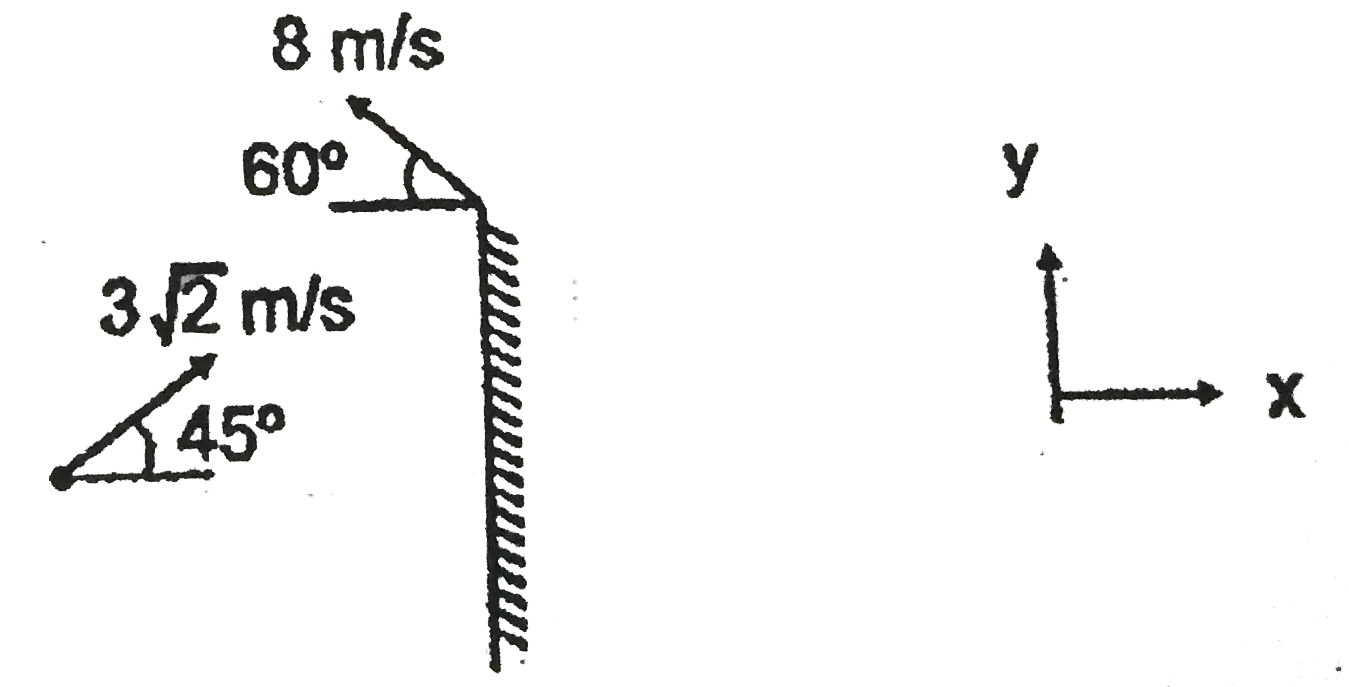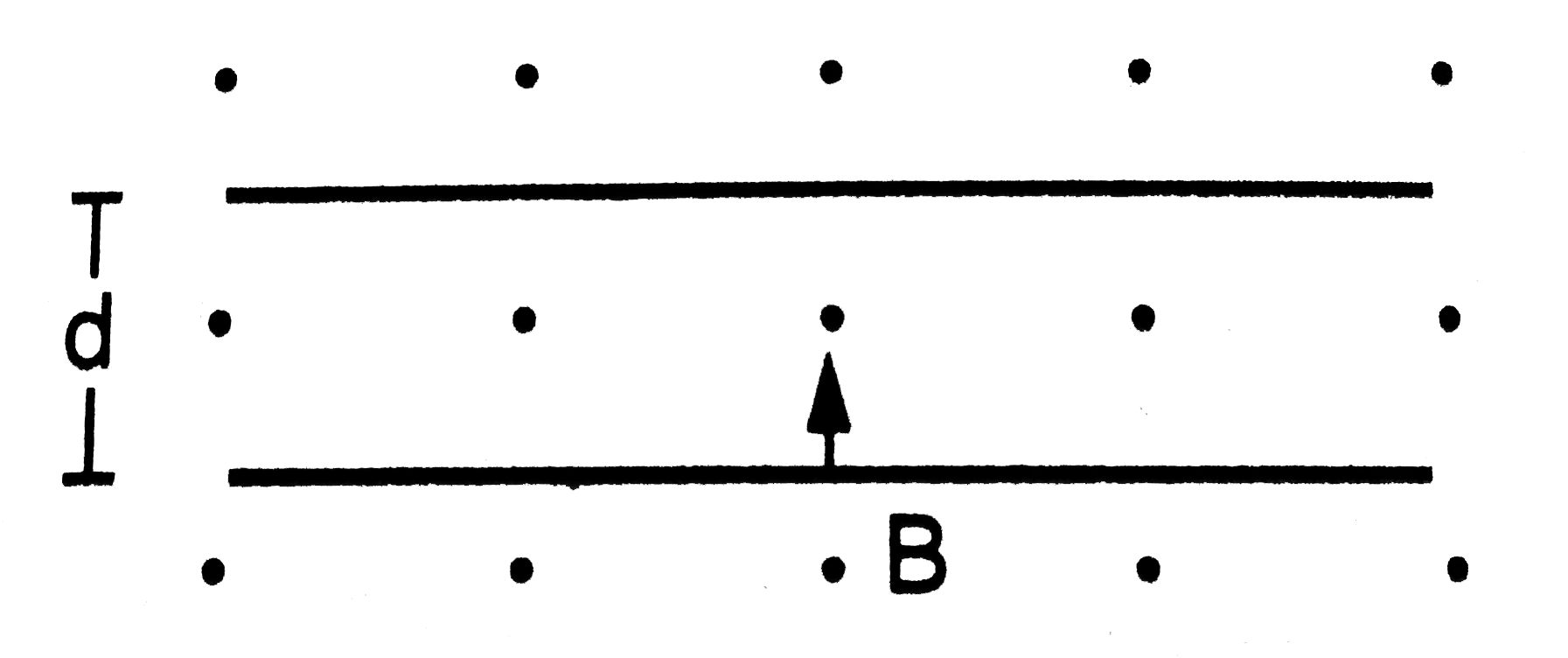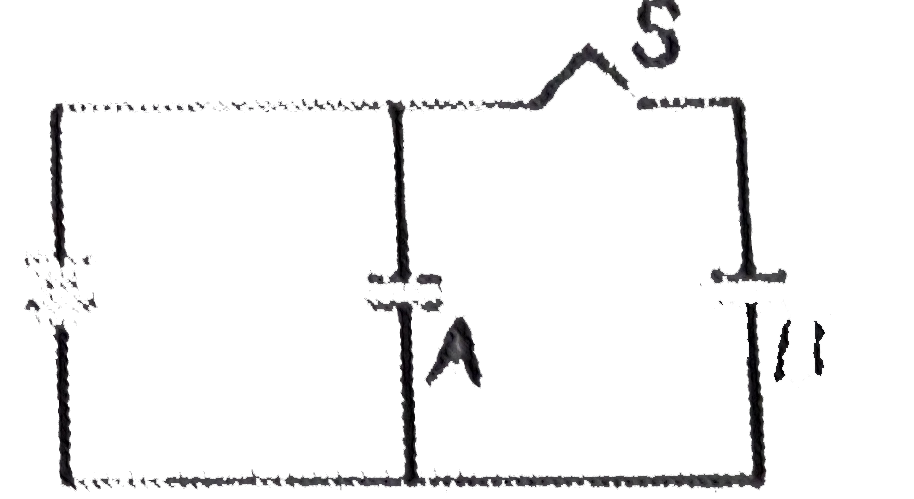An electron passes between two parallel plate of a capacitor as shown in the diagram. The electron emetrs the plate at t=0 and it comes out of the plates at time t-T, the electron hits the screen at A, as shown. Now a time varying potential difference V is applied between the plates, as shown in the graph. (Neglect the gravity). The point where the electrin now will strike the screen (as compared to point A) will be

deflected up
deflected down
deflected up then down
deflected down then up
The correct Answer is:A
Step by step video solution for An electron passes between two parallel plate of a capacitor as shown in the diagram. The electron emetrs the plate at t=0 and it comes out of the plates at time t-T, the electron hits the screen at A, as shown. Now a time varying potential difference V is applied between the plates, as shown in the graph. (Neglect the gravity). The point where the electrin now will strike the screen (as compared to point A) will be by Physics experts to help you in doubts & scoring excellent marks in Class 11 exams.
Updated on:21/07/2023Topper's Solved these Questions
Similar Questions
In the situation shown in figure, find the velocity of image.

View SolutionA digital signal-
View SolutionAn electron is emitted with negligible speed from th nagative plate of a parallel plate capacitor charged ot a potential difference V. The separtion between the plates is d and a magnetic field B exists in the space as shown in . Show that the electron will fail to strike the upper plate if ltdgt (2meVeB20)12.

View SolutionAn electron enters the region between the plates of a parallel plate capacitor at an angle theta to the plates. The plate width is l , the plate separation is d . The electron follows the path shown just missing the upper plate. Neglect gravity. Then,
View SolutionAt the moment t=0 on electron leaves one plate of a parallel-plate capacitor with a neglible velocity. An accelerting volatage, varrying as V=at, where a=100V/s is applied between the plates is l=5.0cm. What is the velocity of the of the electron at the moment it reaches the opposite plate?
View SolutionAn electron passes between two parallel plate of a capacitor as shown in the diagram. The electron enters the plate at t=0 and it comes out of the plates at time t=T. The electron hits the screen at A, as shown. Now a time varying potential difference V is applied between the plates, as shown in the graph. (Neglect the gravity). The point where the electron now will strike (as compared to point A) will be
View SolutionTwo identical air filled parallel plate capacitors are charged to the same potential in the manner shown by closing the switch S. If now the switch S is opened and the space between the plates is filled with a dielectric of relative permittivity εt, then

View SolutionThe potential difference between two large parallel plates is varied as v = at, a is a positive constant and t is time. An electron starts from rest at t=0 from the plate which is at lower potential. If the distance between the plates is L, mass of electron m and charge on electron -e then find the velocity of the electron when it reaches the other plate.
View SolutionThe separation between the plates of a parallel plate capacitor is t, and the intervening space is filled with glass, of dielectric constant 6. Now, the separation between the plates is increased by t. How would the charge on the capacitor and the potential difference between its plates charge, if
The plates remain connected with the charging battery
View SolutionThe separation between the plates of a parallel plate capacitor is t, and the intervening space is filled with glass, of dielectric constant 6. Now, the separation between the plates is increased by t. How would the charge on the capacitor and the potential difference between its plates charge, if
The battery is disconnected before increasing the separation between the plates?
View SolutionAt t=0 ,an electron leaves one plate of a parallel plate capacitor with negligible initial velocity.An accelerating voltage,varying as V= kt ,is applied between the plates.The separation between the plates is l ,velocity with which the electron reaches the opposite plate is ..?
View SolutionAt "t=0," an electron "(e,m)" leaves one plate of a parallel plate capacitor with negligible initial velocity.An accelerating voltage,varying as "V=kt," is applied between the plates.The separation between the plates is "l" ,velocity with which the electron reaches the opposite plate is
View SolutionThe potential difference between two parallel plates is 10^(4) V. If the plates are separated by 0.5 cm, the force on an electron between the plates is
View SolutionTwo long parallel plates A and B are separated by a distance of 4 cm with an electric field of 45 . 5 Vm^(-1) between the plates normally from plate A to plate B , as shown in the figure. An electron is projected from plate A with velocity v at an angle of 30^(@) with the surface of plate A . The maximum value of v so that the electron does not hit plate B is (Assume gravity free space, charge of electron = 1.6 xx 10^(-19) C and mass of electron = 9 . 1 xx 10^(-31) kg )
View SolutionA uniform magnetic field (B) is applied between the plates of a capacitor in the outward direction as shown in the figure. Surface charge density on the capacitor plates is sigma . An electron is fired in between the plates, parallel to them, as shown in the figure. The electron is found to move straight in-between the plates of capacitor. Neglect the gravity. If L is the length of the plates then caleulate the time taken by the electron to cross the plates.
View SolutionAn electron is emitted with negligible speed from th nagative plate of a parallel plate capacitor charged ot a potential difference V. The separtion between the plates is d and a magnetic field B exists in the space as shown in . Show that the electron will fail to strike the upper plate if ltdgt (2meVeB20)12.

View Solution

